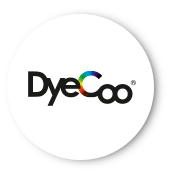DyeCoo offers a CO2-based dyeing technology that eliminates the need for water and processing chemicals in the dyeing process of fabrics and also reduces energy consumption.
This technology uses CO2 for dyeing polyester fabrics, and has already been embraced by major brands such as IKEA and Nike. DyeCoo Textile Systems release liquid CO2 into the dye vessels of the machine, where heat and pressure transform the liquid CO2 into a supercritical fluid that is used to dye fabrics. The machine then lowers the heat and pressure, and the CO2 leaves the dye vessels as a gas. In the process, 95% of the CO2 is recovered and stored as liquid ready for reuse, which makes DyeCoo an almost closed-loop technology. The result is that no processing water or chemicals are required, with a 50% reduction in energy consumption for the process. Moreover, the process is substantially quicker than conventional textile dyeing methods.
Why you should care
Between 17 and 20% of industrial water pollution is generated by textile dyeing processes, and the industry continues to cause environmental stress on the water resources in developing countries. This CO2-based dyeing process offers a sustainable alternative to conventional water-based dyeing process, in which up to 700 liters of freshwater are typically required to finish just one kg of textiles. In addition, DyeCoo’s process lowers operational costs by up to 45% compared to conventional textile dying, according to the company.
How the Global Goals are addressed
Clean water and sanitation
The waterless dyeing process not only reduces fresh water demand, but also prevents the large volumes of polluted water that are typical of water-based dyeing processes.
Industry, innovation and infrastructure
According to DyeCoo, the technology can save 15 million liters of water and 6,500 kilograms of processing chemicals annually per dyeing machine.
Responsible consumption and production
Nike has opened a water-free dyeing facility in Taiwan with DyeCoo equipment to eliminate the use of water and chemicals in the fabric dyeing process.
Climate action
The processes uses reclaimed CO2 as the dyeing medium, which is continuously captured and reused. The process uses 50% less energy than conventional dyeing processes.


